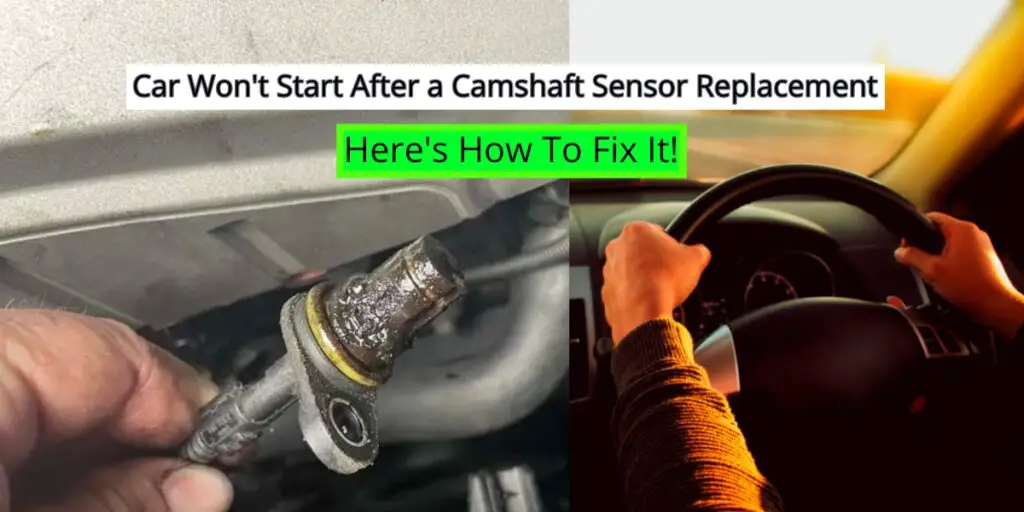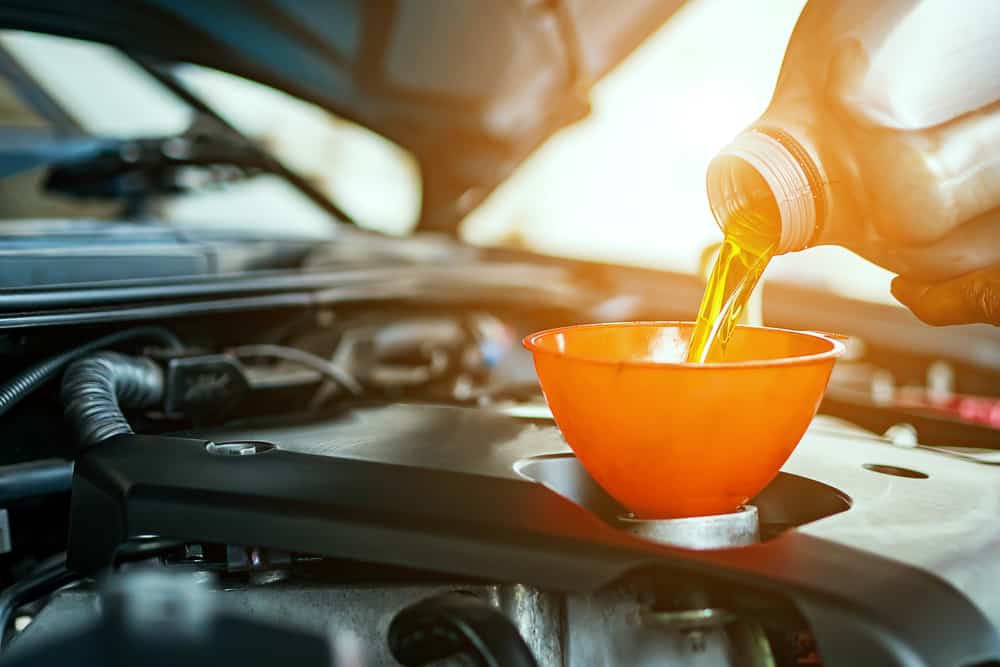
If you’ve ever replaced a camshaft sensor on your car, you know it can be a pain in the neck. The sensor is located in a difficult spot and is often hard to reach.
Once you finally get the sensor replaced, you expect the car to start, but what do you do when it doesn’t?
If your car won’t start after a camshaft sensor replacement, ensure the sensor is properly connected and seated. Also, check the wiring harness for any loose connections or damaged wires. Other causes of this problem are an incompatible camshaft sensor, a blown fuse, or issues with engine oil.
This article will tell you how to fix a car that won’t start after a camshaft sensor replacement. I will also provide some tips on how to avoid this problem in the future.
1. Make Sure the Camshaft Sensor is Properly Connected
A camshaft sensor is one of the most important components of a car’s ignition system. It is responsible for monitoring the position of the camshaft and sending a signal to the electronic control unit (ECU) to indicate when the engine should fire the spark plugs.
If the camshaft sensor is poorly connected, it can cause a car not to start because the ECU needs a signal from the sensor to activate the ignition system. If the sensor is not sending a signal, the ECU will not be able to activate the ignition system, and the car will not start.
To resolve this issue, follow the steps below.
- First, locate the camshaft sensor. It’s usually located at the top of the engine, near the cylinder head. Once you’ve found it, you’ll need to disconnect the sensor.
- Next, clean the area around the sensor. The cleaning will help ensure that the new connection will be strong.
- Finally, reconnect the sensor. Make sure to use a new connector and tighten the connection down securely.
If the issue was a poor connection between the camshaft sensor and the ECU, these steps should help your car’s engine should run smoothly.
2. Inspect the Wiring Harness Around the Engine
If you’ve checked the sensor, the connection appears strong, and your car still won’t start, you need to check the wiring harness.
A wiring harness in a car is a system of wires and cables that route electricity and signals around a vehicle. If this cable system around the engine is damaged or of poor quality, it can cause several issues – including problems with the camshaft sensor.
The camshaft sensor may not be able to properly send signals to the engine control unit since it depends on the wiring system to do so.
Issues with the wiring can lead to several problems, such as engine misfires, decreased fuel efficiency, and increased emissions. In some cases, it can also cause the engine to stall, making it difficult to start your car.
The most effective way to resolve this is to use a soldering gun to repair the wiring; you can verify this problem by reading the error code on the engine’s computer.
You may also have an issue with the grounding, which might have damaged your new camshaft sensor beyond repair. In such cases, you should consult a mechanic to fix the ground, and you’ll need to replace the sensor with a new one.
3. Ensure the Sensor is Compatible With the Camshaft
If the ignition system is not working properly, it could be caused by an incompatible camshaft sensor. Remember that there is no such thing as a universal camshaft sensor, so incompatibility issues are common.
Since the camshaft sensor is responsible for monitoring the position of the camshaft, it will only be able to track its position if they are compatible accurately. Any incompatibility can cause the ignition system to fail, preventing the engine from starting.
While several symptoms indicate an incompatible camshaft sensor, they are only evident when driving. If your car is frequently stalling but does turn on, keep an eye out for signs like the engine light coming on, poor fuel economy, and transmission shifting issues.
Check the label on the camshaft sensor to find a manufacturer’s label to see if it matches your camshaft.
If, after inspection, you discover that the camshaft sensor is incompatible with the camshaft, you should swap it out for one that is compatible.
Choosing the right camshaft sensor will facilitate the ignition process of your car. If you’re unsure about the compatibility, have a trusted mechanic examine it.
4. Check Whether the Fuses Are Blown
A blown camshaft sensor fuse can cause a failed ignition. When the camshaft sensor fuse is blown, it prevents the camshaft sensor from getting the power it needs to operate. A lack of power to the camshaft sensor can cause the engine to misfire or not start at all.
Fuses can blow if old or have been changed with a higher amperage fuse. Therefore, replacing a 15 amp fuse with a 20 or 30 amp fuse or a 20 amp fuse with a 30 amp fuse could result in a blown fuse.
Thus, when changing blown fuses in the future, it is crucial to double-check the amperage and use the correct one.
5. Check Engine Oil Level and Quality
Car ignition is one of the most important aspects of engine performance, and it can be affected by many factors, including engine oil level and quality.
It is important to maintain the correct oil level and to use oil of the correct quality. Using low-quality oil can lead to poor ignition.
Signs That You Need to Change Your Engine Oil
Your car’s engine is a complex system of moving parts that require regular maintenance to keep it running smoothly.
One of the most important maintenance tasks is changing your oil regularly. But how do you know when it’s time for an oil change?
The following are the most common indications that your engine oil needs to be changed.
Your Oil Mileage Exceeds 7000 Miles
Engine oil is necessary to keep all engine parts lubricated and in good working order. Over time, the oil degrades, becomes more viscous, or heats up more easily, affecting the engine’s workings.
While modern oils are better quality, they still need to be replaced every 5000 miles (8046.72 km), and definitely after you’ve exceeded 7000 miles (11265.41 km).
Make sure you adhere to the oil change reminder sticker that is typically placed on the driver’s side interior of the windshield by oil change facilities or mechanics.
Your Engine Was Knocking
Engine knocking is a noise heard when the engine is running, caused by the combustion of the air and fuel mixture.
The mixture can become unstable and start to detonate or “knock.” This knocking can cause damage to the engine and prevent your car from starting.
One way to help prevent engine knocking is to change your oil regularly. Oil changes help to remove build-up and deposits that can cause knocking.
They also help to keep the engine clean and prevent corrosion. Therefore, an oil change is a good place to start if you heard knocking from your engine before it refused to start.
Your Car Was Emitting a Dark Exhaust Smoke
Dark exhaust smoke is usually caused by one of two things: either the engine is burning too much oil, or the fuel mixture is too rich. And while there are several ways to fix a fuel mixture that’s too rich, oil changes can help fix an engine that’s burning too much oil.
If you noticed dark exhaust smoke from your car before it stalled, an oil change could help fix the problem.
What Will Happen If You Put the Wrong Engine Oil In Your Car?

If you put the wrong engine oil in your car, it could damage the engine. The wrong oil may not have the right viscosity, or it may not be designed for your car’s engine.
Using the wrong oil could cause the engine to overheat or seize up. In some cases, it may even cause the engine to catch fire.
So what should you do if you accidentally put the wrong oil in your car? The best thing to do is to remove the oil and then add the correct oil.
If you need help with this, you should consult your car’s owner’s manual or take your car to a mechanic or a dealership. They will be able to help you out and make sure that your car is running properly.
Read my post, “Can You Mix Red Diesel and Normal Diesel?” to learn more about car maintenance.
Final Thoughts
A few possible explanations exist if your car doesn’t start after a camshaft sensor replacement. The most likely explanation is that the camshaft sensor itself is faulty. The connections may have come loose, and the sensor will need to be reseated in the engine.
Another possibility is that the wiring to the sensor is damaged. If the wiring looks good, your engine oil may need to be changed, especially if you noticed signs like engine knocking or dark exhaust smoke before your car stalled.
